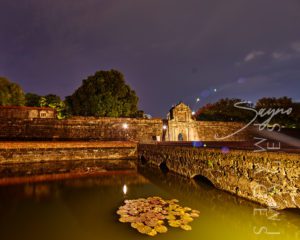
Intramuros: The Historic Walled City of Manila
It is also known as the Walled City, and during the Spanish Colonial Period it was synonymous with the city of Manila. Intramuros was also
The William A. Jones Memorial Bridge, commonly known as Jones Bridge, is an arched girder bridge spanning the Pasig River in Manila. Named after U.S. legislator William Atkinson Jones, who played a crucial role in granting legislative autonomy to the Philippines through the Jones Law, the bridge was constructed in the 1910s to replace the historic Puente de España (Bridge of Spain). This bridge connects Quintin Paredes Road in the Binondo district to Padre Burgos Avenue in the Ermita district.

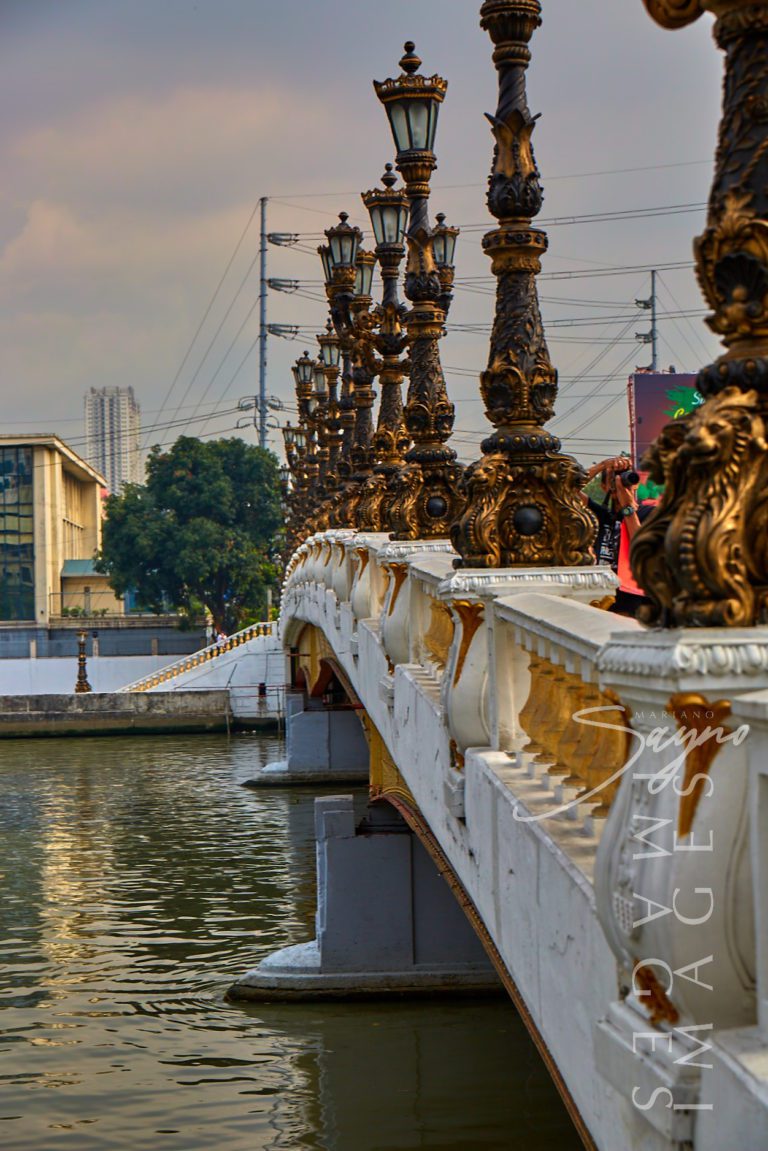

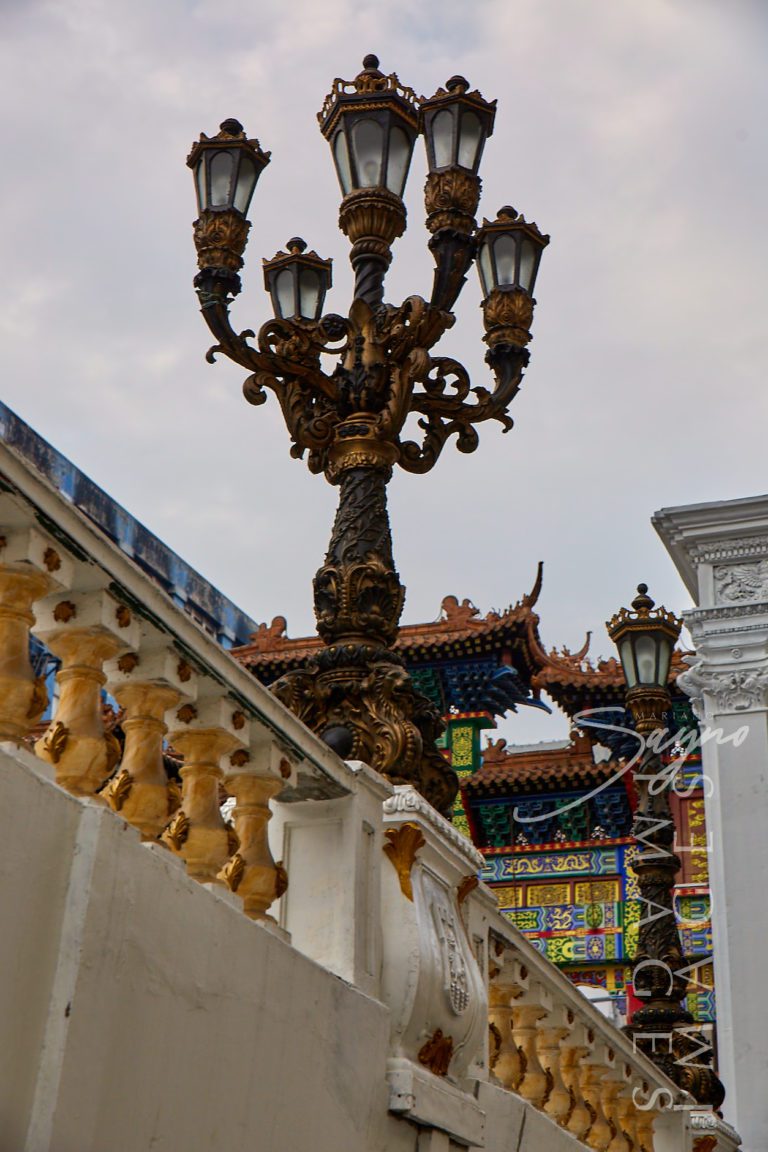
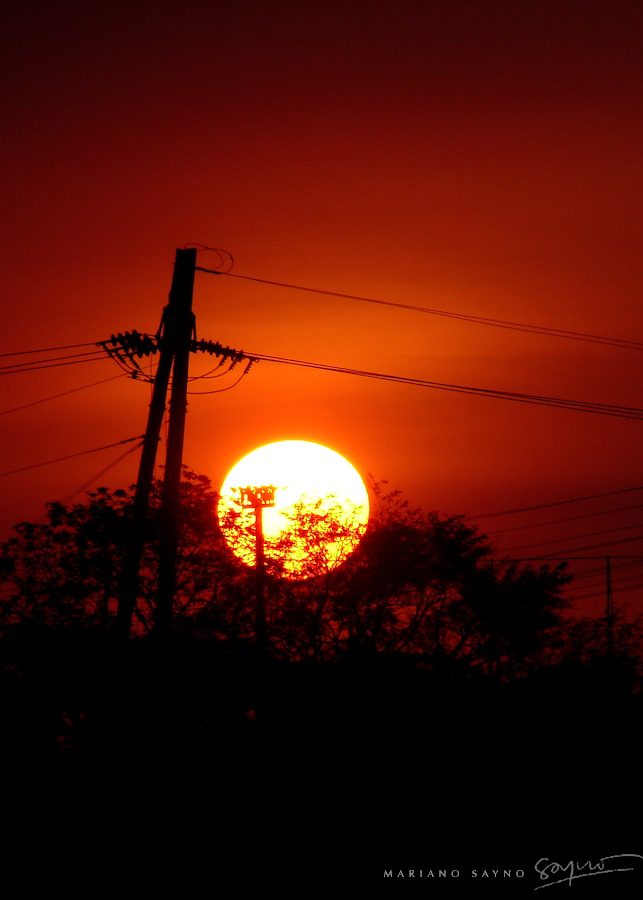
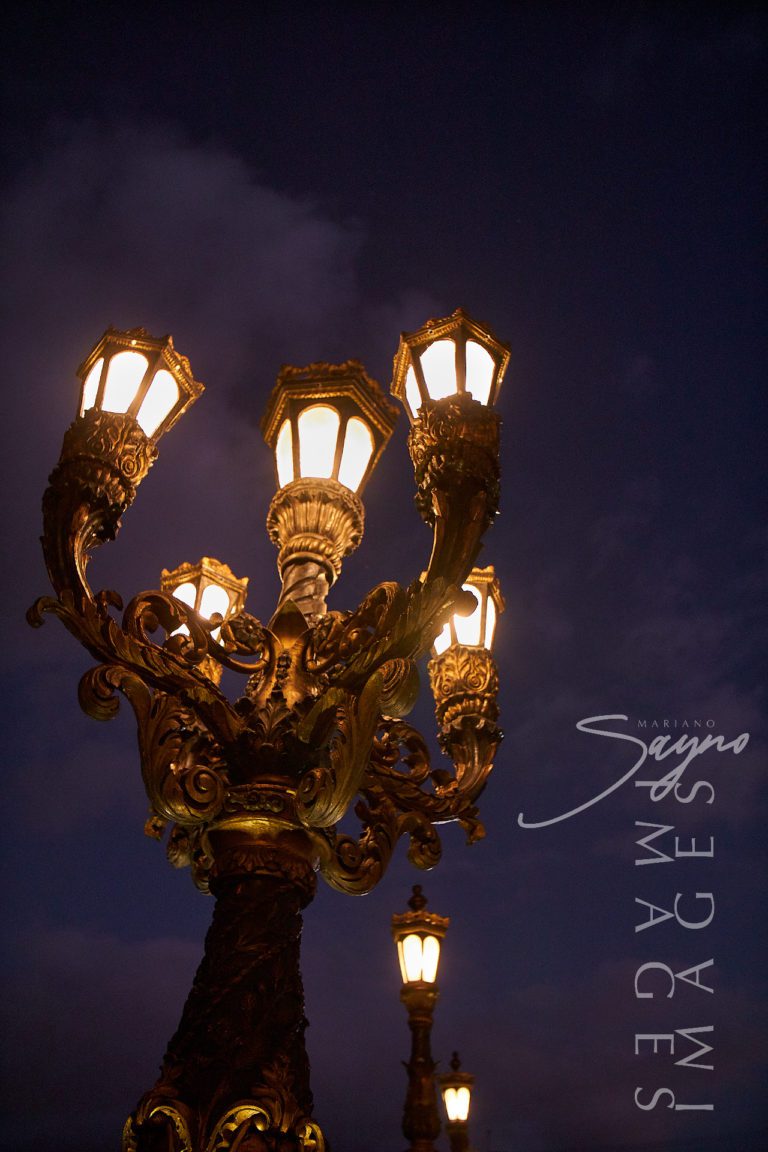
ABOVE: The black lamps that line the street contrast with, and illuminate, the colorful Filipino-Chinese Friendship Arch—the gateway to Chinatown.
ABOVE: The black lamps that line the street contrast with, and illuminate, the colorful Filipino-Chinese Friendship Arch—the gateway to Chinatown.
The initial construction of Jones Bridge was commissioned by the City Government of Manila in 1919, with the Philippine Bureau of Public Works completing the project in 1920. It was designed to replace the Puente de España, which had spanned the Pasig River since the Spanish colonial era and had been the site of several bridges since 1630. After the Puente de España collapsed due to heavy rains in September 1914, a temporary truss bridge was used while the new bridge was being built.

Jones Bridge was part of a grand plan by urban planner Daniel Burnham, who envisioned Manila’s rivers as key features, similar to the Seine River in Paris and the canals of Venice. Although Burnham’s plan was overseen by William E. Parsons, Filipino architect Juan M. Arellano finalized the bridge’s design following the passage of the Jones Act. Arellano, inspired by Haussmann’s renovation of Paris, designed the bridge with three arches supported by two heavy piers and adorned it with statues of boys on dolphins reminiscent of those on the Pont Alexandre III in Paris. Four statues, collectively known as La Madre Filipina (The Philippine Motherland), were created by sculptor Martinez and placed on concrete plinths at the bridge’s ends.


During World War II, the bridge was renamed Banzai Bridge by Japanese occupiers. The Japanese Army bombed the bridge as American troops advanced during the Battle of Manila, causing extensive damage and permanently destroying one of the four La Madre Filipina statues. A Bailey bridge was temporarily installed to maintain vehicle traffic while the main bridge was reconstructed.


Following World War II, the Philippine Bureau of Public Works and the U.S. Bureau of Public Roads undertook the reconstruction of Jones Bridge using large, deep steel girders. This reconstruction removed all original ornamentation and replaced the neoclassical design with a more utilitarian appearance. The remaining three La Madre Filipina statues were removed; one was relocated to Rizal Park, and the other two were placed at the Court of Appeals Main Building. The original plinths were demolished.
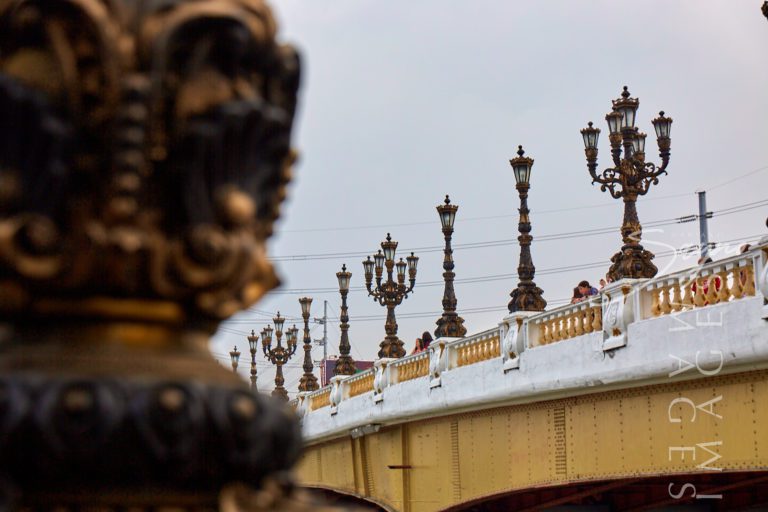
In 1998, as part of the Philippine Centennial Independence celebrations, a partial restoration was undertaken by architect Conrad Onglao, commissioned by then-First Lady Amelita Ramos. This restoration replaced the post-modern steel design with stone balustrades. Under Manila Mayor Lito Atienza, thematic lamp posts and illuminated steel girders were added, though these changes were met with mixed reactions. Additionally, two fu dogs were placed at the south side of the bridge, introducing a Chinese element that diverged from the original neoclassical design.

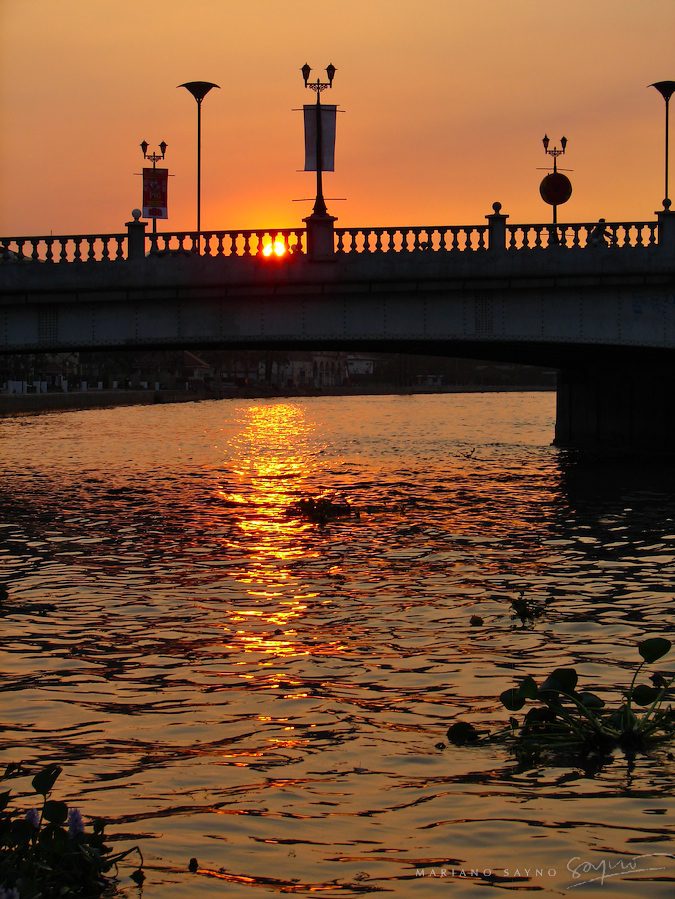

OLD PHOTO | The bridge as it looked before its renovation and transformation into what it is today. The spot has always been a favorite of tourists and photographers for sunset shoots.
OLD PHOTO | The bridge as it looked before its renovation and transformation into what it is today. The spot has always been a favorite of tourists and photographers for sunset shoots.
The major redevelopment of Jones Bridge in 2019, announced by Manila Mayor Isko Moreno, aimed to restore the bridge to its near-original architecture. This included the return of the three surviving La Madre Filipina statues and the replication of the fourth statue, which had been destroyed during the war. Jose Acuzar, owner of Las Casas Filipinas de Acuzar, was commissioned to design and build Beaux-Arts-style lamp posts similar to those on Paris’s Pont Alexandre III. The four plinths for the La Madre Filipina statues were reconstructed to serve as pedestals for the returning sculptures.
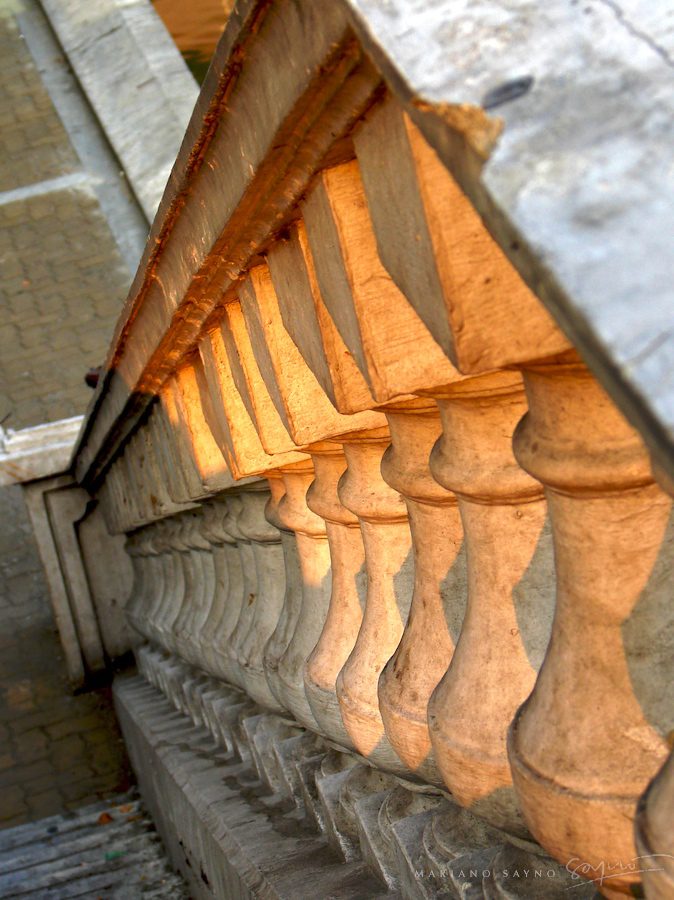


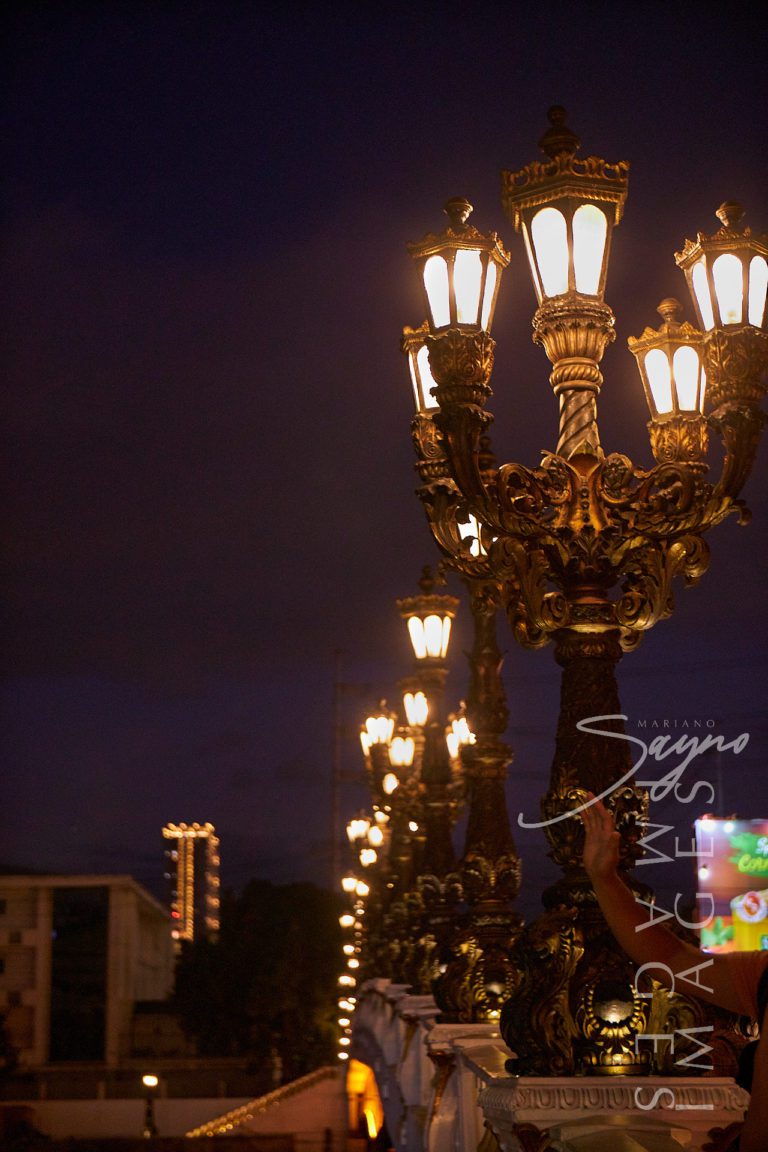
The La Madre Filipina statues, each representing different aspects of nationhood during the Philippines’ transition from a U.S. colony to independence, were carefully reinstated during the 2019 redevelopment. The Statue Gratitude, originally located at the southeast portion of the bridge, was relocated to Rizal Park after World War II and was eventually returned to its original location after 74 years. The Statue Democracy, which was destroyed during the Battle of Manila in 1945, was replicated in 2019 using archival materials from the National Library of the Philippines and placed at the southwest corner of the bridge. The Statue Progress, situated on the northwest portion of the bridge and symbolizing labor, education, and power, had its replica installed in June 2021 alongside the Statue Justice. The original statue, located on the grounds of the Court of Appeals, was deemed too fragile for relocation. Similarly, the Statue Justice, found on the northeast side of the bridge and representing law, order, and equality, saw a replica installed in June 2021, while the original remained at the Court of Appeals due to its fragility.
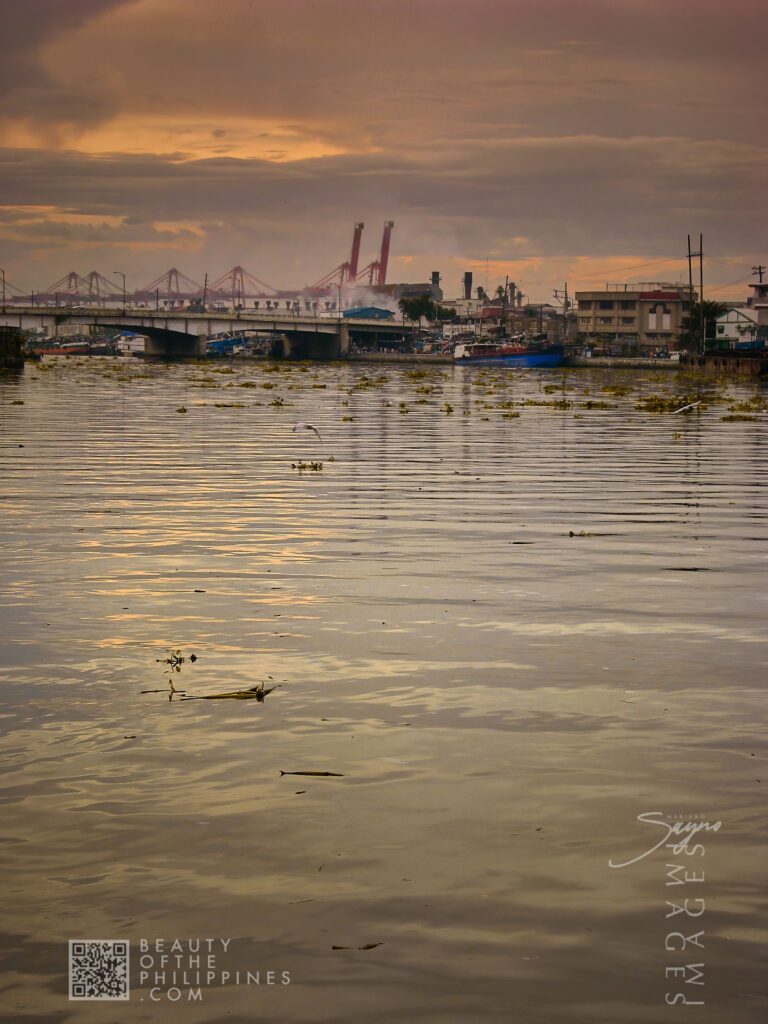

RELATED STORIES

It is also known as the Walled City, and during the Spanish Colonial Period it was synonymous with the city of Manila. Intramuros was also
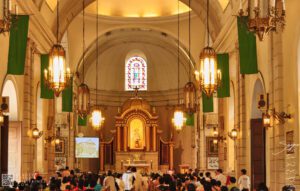
Malate Church stands as a profound symbol of faith, resilience, and artistry, preserving its sacred role and architectural splendor through centuries of triumphs and trials.

Nestled in the historic district of Ermita, Manila City Hall is more than just the seat of the city’s government—it’s a testament to the rich
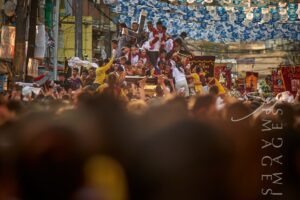
The Nazareno Festival, or the Feast of the Black Nazarene, is one of the most spectacular and deeply moving religious events in the Philippines. Held
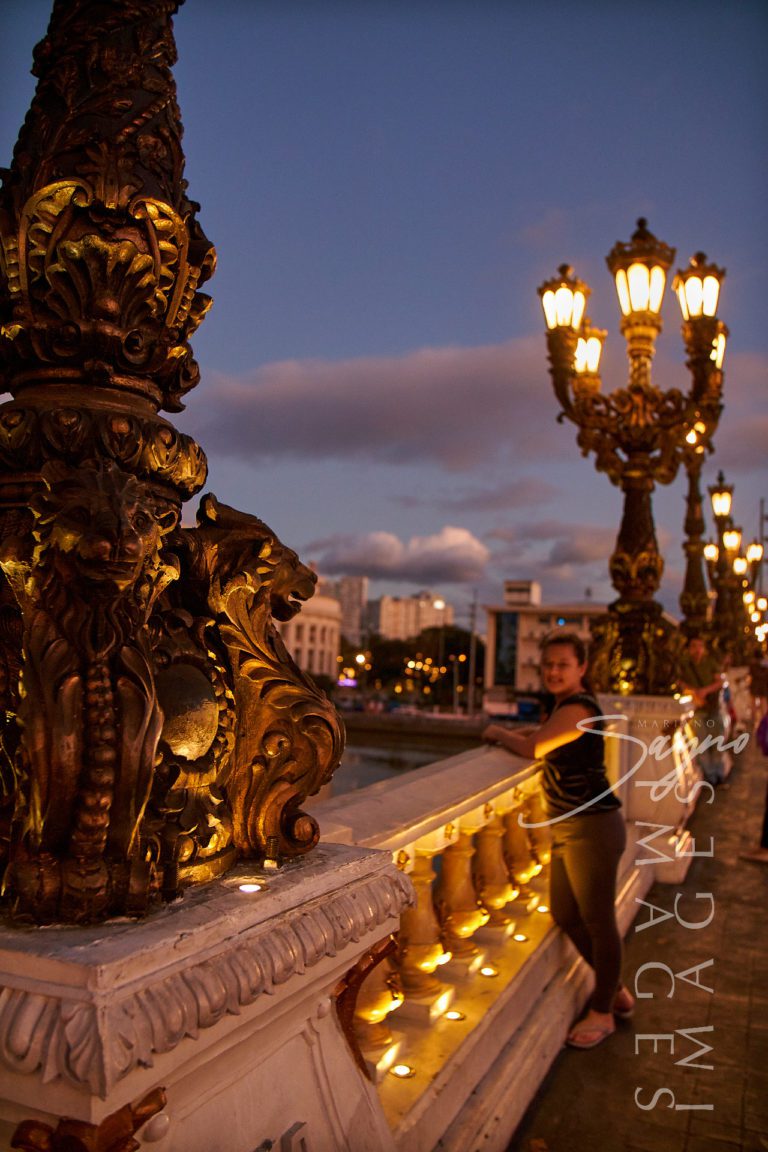

ABOVE: The new lamp posts, designed by architect Jerry Acuzar, are similar enough to the originals that they inspire visions of what Manila must have looked like in those early years before war destroyed so much of the city.
ABOVE: The new lamp posts, designed by architect Jerry Acuzar, are similar enough to the originals that they inspire visions of what Manila must have looked like in those early years before war destroyed so much of the city.
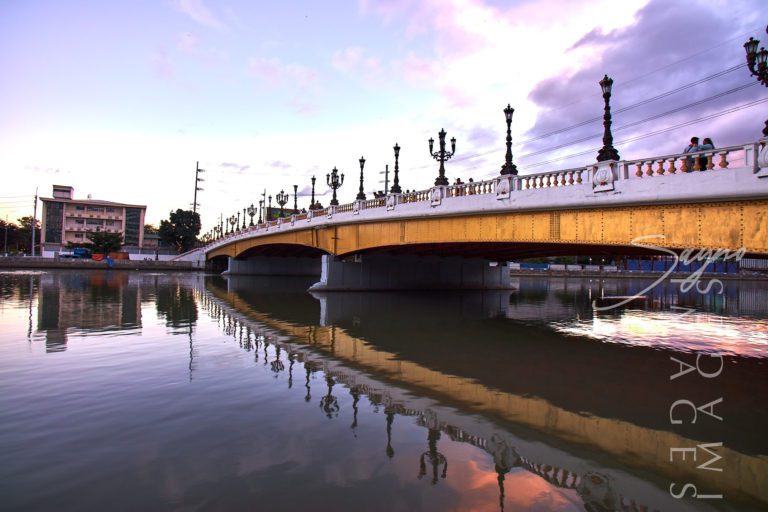
I’m looking forward to the stories and images leaving a lasting positive impression on you, just as they have on me. Stay connected with us on social media for a weekly exploration of travel assignments and breathtaking visuals. Our focus is on championing local tourism, showcasing small businesses, and honoring the magnificence of the Philippines through the content we curate. Join us in spreading the word by clicking the ‘share’ buttons below. Your support means the world to us.
EXPLORE MORE about
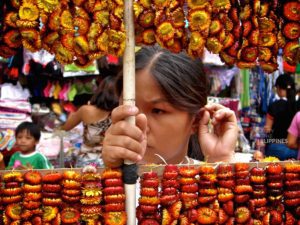
Plaza Miranda is a public square bounded by Quezon Boulevard, Hidalgo Street and Evangelista Street in Quiapo, Manila. It is the plaza which fronts the
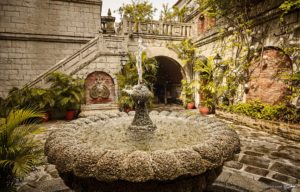
Casa Manila, located in the heart of Intramuros, Manila, is a living museum that transports visitors to the grandeur of the Spanish colonial era. As
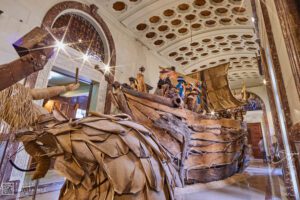
The National Museum of Anthropology, located in the heart of Manila within the National Museum Complex, is a must-visit destination for travelers eager to explore
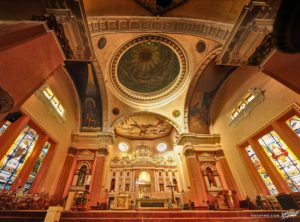
The Binondo Church is a historic church in Manila, located in the District of Binondo, near the Plaza San Lorenzo Ruiz. It was previously called

It is the home of the popular Asian elephant, Mali, as well as 90 other species. As well as being a landmark in Manila, the
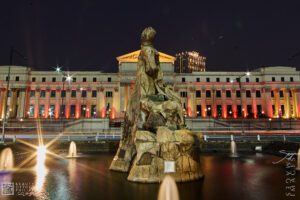
The Gomburza National Monument, located in front of the National Museum of Fine Arts along Padre Burgos Avenue in Manila, stands as a solemn tribute
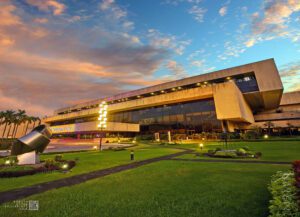
The Philippine International Convention Center (PICC) stands as a monument to the Philippines’ ambition to be a key player on the global stage. With its
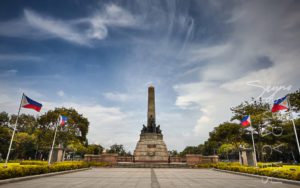
Located along Roxas Boulevard, Manila and adjacent to the century-old walled city of Intramuros, the Luneta National Park, or “Luneta” as many refer to it,
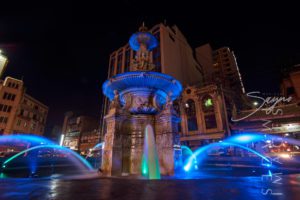
I experienced the vibrant and colorful life of downtown in full. I took some time to appreciate the beauty of Santa Cruz Church and Plaza
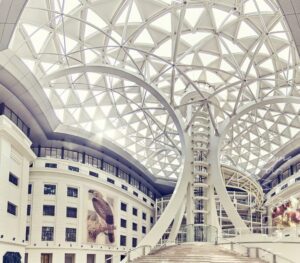
Explore the vibrant tapestry of Manila through its four national museums, each a unique gem in the city’s cultural crown. These four distinguished establishments are

It is also known as the Walled City, and during the Spanish Colonial Period it was synonymous with the city of Manila. Intramuros was also
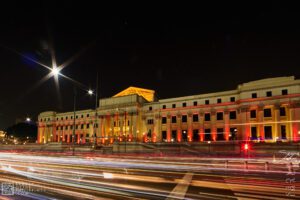
Manila, the vibrant capital of the Philippines, is home to a wealth of cultural and historical landmarks, and among its crown jewels is the National
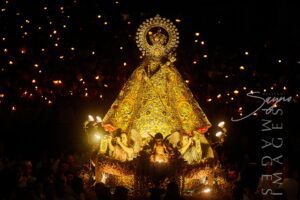
Every October, the vibrant streets of Quezon City come alive with faith, devotion, and rich cultural traditions during the Feast of La Naval de Manila.
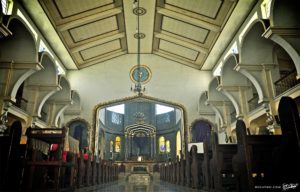
The Polo Church, formally known as the San Diego de Alcala Church, resides in the Polo neighborhood of Valenzuela, Manila. This church has a captivating
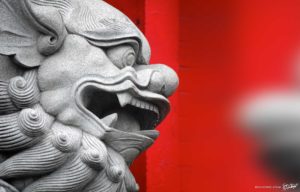
In addition to being considered the oldest Chinatown in the world, Binondo Chinatown is also the center of trade and commerce in Manila City. In
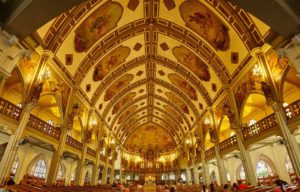
The Manila Abbey San Beda, or formally known as Abbey of Our Lady of Montserrat, is a Benedictine men’s monastery located along the streets of
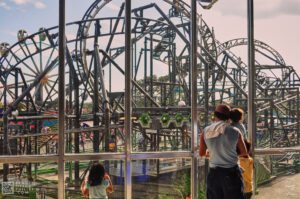
Nestled in the heart of Pasay City within the Cultural Center of the Philippines Complex, Star City stands as one of the premier amusement parks
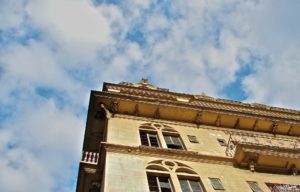
It is always a surprise for buildings, parks and houses to survive such wars as it is almost inevitable that everything will be brought down
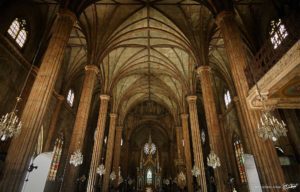
San Sebastian Church is a Roman Catholic Minor Basilica located in Quiapo, Manila. It’s also known as Minor Basilica of San Sebastian or San Sebastian

Nestled in the heart of Quezon City, La Mesa Ecopark stands as a serene sanctuary, offering both a retreat for nature lovers and an educational
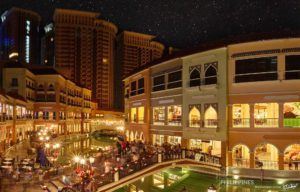
Located in the heart of the Taguig City, the Venice Grand Canal is a lifestyle mall development under the Megaworld Lifestyle Malls Located inside the
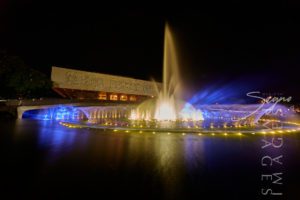
The Cultural Center of the Philippines or CCP was founded in 1966 under the directive of former President Ferdinand Marcos, in order to reinforce and

The University of the Philippines Diliman (UP Diliman) is more than just the country’s premier academic institution—it is a historical, cultural, and natural destination worth
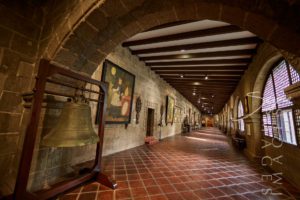
The San Agustin Museum is located adjacent to the UNESCO World Heritage Site, San Agustin Church. It is located in Intramuros—the walled city of Manila—and

The Nazareno Festival, or the Feast of the Black Nazarene, is one of the most spectacular and deeply moving religious events in the Philippines. Held

As the nation’s first ever world-class marine theme park, Manila Ocean Park is located in Ermita Manila, within the Philippines’ largest urban resort/aqua-themed hotel complex
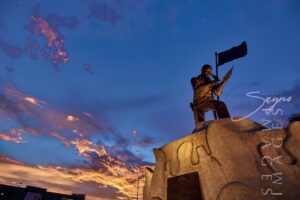
The Andres Bonifacio Birthplace Monument in Tutuban, Divisoria stands as a powerful symbol of Filipino patriotism and a tribute to the courage and leadership of Andres

The Bonifacio Monument, also called Bonifacio Monumento or Monumento, proudly stands in Caloocan City, Metro Manila. It is a powerful symbol created by the National

Nestled at the crossroads of Las Piñas in Metro Manila and Bacoor in Cavite, the Zapote Bridge stands as a silent yet powerful witness to
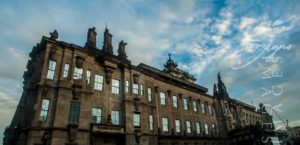
UST, also known as the University of Santo Tomas, is a private Roman Catholic university located in Sampaloc, Manila. It was founded on 28 April
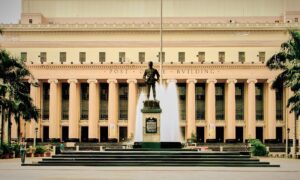
Nestled in the heart of Manila, Liwasang Bonifacio is a place where history, culture, and modern urban life converge. Formerly known as Plaza Lawton, this
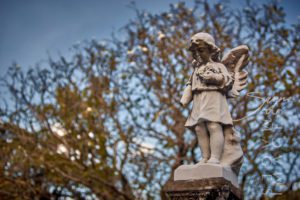
As one of the oldest cemeteries in Manila, Campo Santo De La Loma, commonly referred to as the La Loma Cemetery, is one of the
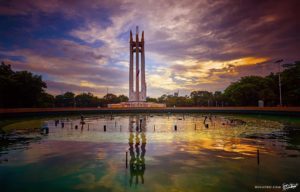
One of Quezon City’s main parks is the Quezon Memorial Circle, which is located in Quezon City and is surrounded by an elliptical road, making
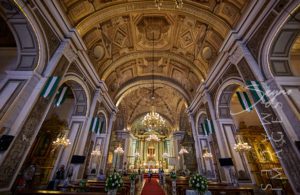
Known as one of the most important baroque churches in the Philippines and as one of the only four baroque churches in the Philippines that

Nestled in the historic district of Ermita, Manila City Hall is more than just the seat of the city’s government—it’s a testament to the rich

Originally built in 1880, the Manila Cathedral is the current version of the longstanding Church of Manila. It is a masterpiece of architecture that was
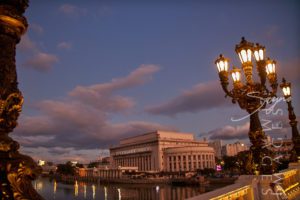
The Manila Post Office, officially known as the Manila Central Post Office, is a distinguished example of neoclassical architecture, originally designed by Juan M. Arellano,
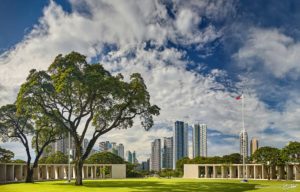
Manila American Cemetery and Memorial is located in the heart of Taguig City on the lands of Fort Bonifacio and serves as the largest grave
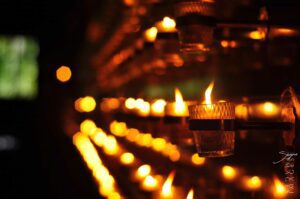
The Padre Pio Chapel, also known as the St. Pio of Pietrelcina Chapel, holds a special place in my heart as a photographer. It revealed

Malate Church stands as a profound symbol of faith, resilience, and artistry, preserving its sacred role and architectural splendor through centuries of triumphs and trials.
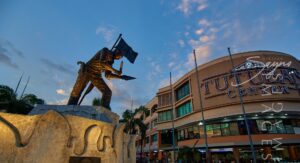
Situated in the heart of Manila, Tutuban Center is more than just a shopping destination—it’s a vibrant mix of history, commerce, and culture that draws
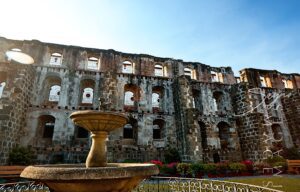
Located within the historic district of Intramuros, Manila, Padre Blanco Gardens—also known as Father Blanco’s Garden—offers a charming and romantic retreat amid centuries-old architecture. This
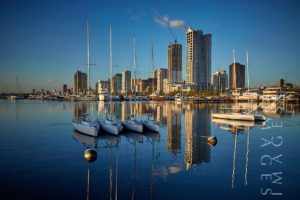
It is considered to be one of the world’s great harbors, the Manila Bay, and it serves as the Port of Manila, Philippines. Having once
BROWSE BY CATEGORIES